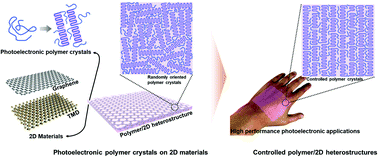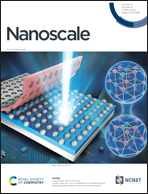Controlled polymer crystal/two-dimensional material heterostructures for high-performance photoelectronic applications
Abstract
The control of atomically thin two-dimensional (2D) crystal-based heterostructures wherein the interfaces of 2D nanomaterials are vertically stacked with other thin functional materials via van der Waals interactions is highly important for not only optimizing the excellent properties of 2D nanomaterials, but also for utilizing the functionality of the contact materials. In particular, when 2D nanomaterials are combined with soft polymeric components, the resulting photoelectronic devices are potentially scalable and mechanically flexible, allowing the development of a variety of prototype soft-electronic devices, such as solar cells, displays, photodetectors, and non-volatile memory devices. Diverse polymer/2D heterostructures are frequently employed, but the performance of the devices with heterostructures is limited, mainly because of the difficulty in controlling the molecular structures of the polymers on the 2D surface. Thus, understanding the crystal interactions of polymers on atomically flat and dangling-bond-free surfaces of 2D materials is essential for ensuring high performance. In this study, the recent progress made in the development of thin polymer films fabricated on the surfaces of various 2D nanomaterials for high-performance photoelectronic devices is comprehensively reviewed, with an emphasis on the control of the molecular and crystalline structures of the polymers on the 2D surface.

- This article is part of the themed collection: Recent Review Articles


 Please wait while we load your content...
Please wait while we load your content...